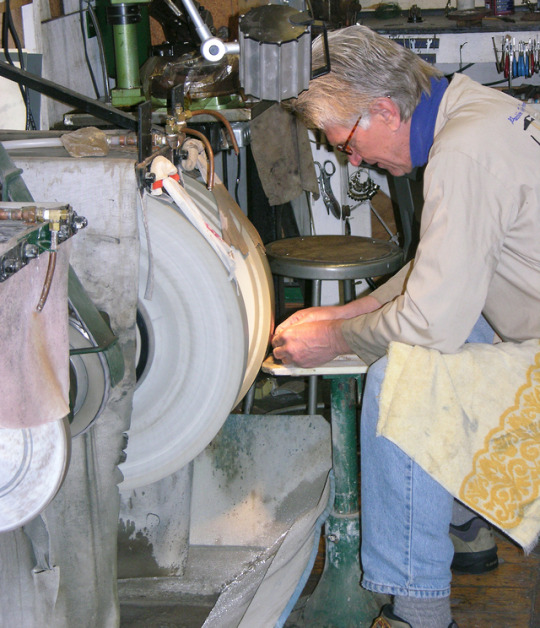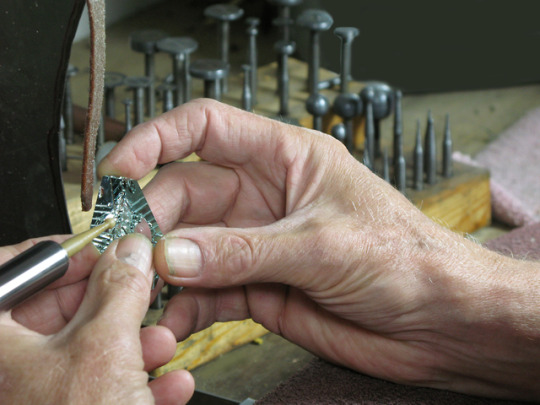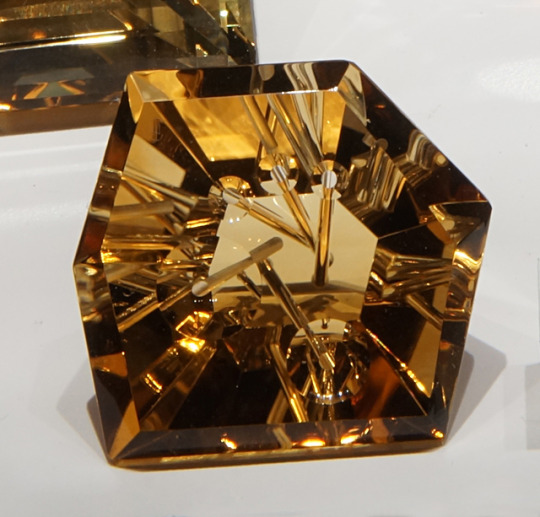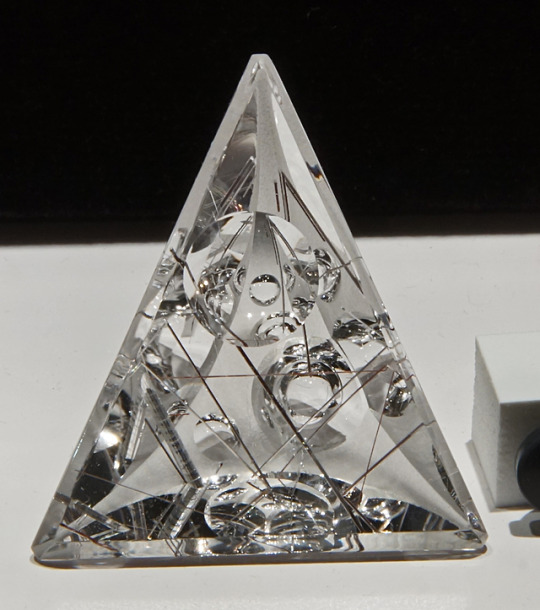Michael Dyber, known as the Master of Optical Illusion, is among the world’s foremost lapidary artists today. He began working in metal and wood at the age of nine and won his first design competition while still in grade school. After earning his BA degree in Fine Arts and Humanities from New England College, he moved from metal and wood into jewelry design. He opened his own shop in New Hampshire but began to feel restricted by the pre-cut gemstones available for his artwork. He then turned his artistic focus toward handcrafting his own unique gems. He started by acquiring top quality gem rough and instead of using standard carving and polishing equipment, Michael built his own specialized tools.


Using these custom-made tools enabled Michael to invent his own unique techniques to create the optical illusions you see within the stones. He calls them the Dyber Optic DishTM, LuminairesTM, Photon PhacetsTM, and ChannelsTM. Each artwork is a one-of-a-kind signed original, based on the characteristics of the individual gem, the hand-crafting skills like the old masters, and the added bonus of Michael’s unique artistic vision. To quote Michael, “My work is asymmetrical, but visually balanced, my goal is to go beyond what has been done, to create infinite designs.”
Wertz Gallery: Gems and Jewelry can now boast of having four pieces of lapidary art on display that were carved by the Master of Optical Illusion, Michael Dyber. Two carvings were purchased in anticipation of a new gem and jewelry gallery and were put on display when Wertz Gallery opened in 2007, one in the Birthstones exhibit and the other in the Quartz as a Gemstone exhibit.


The third was on temporary display in 2014 (May 31st thru August 31st) during the special exhibit in Wertz Gallery that featured all of Michael’s twenty-three award-winning carvings and some of his new creations. We purchased one of his new creations after the exhibit and put it on permanent display later that year in the Quartz as a Gemstone exhibit.

The fourth carving was put on display just last month (June 18th) in the Birthstones exhibit. It was donated to the museum by Michael in 2015.

These carvings began with gem rough from Brazil and they utilize three of the four techniques that Michael has created. Straw has Dyber Optic DishesTM and LuminairesTM; Sliders has Dyber Optic DishesTM ; Twist and the untitled carving have Dyber Optic DishesTM and ChannelsTM. Eventually we would like to add to the collection a piece of lapidary art that has his Photon PhacetsTM technique. It will be exciting to see what new technique Michael comes up with next!
Debra Wilson is the Collection Manager for the Section of Minerals at Carnegie Museum of Natural History. Museum employees are encouraged to blog about their unique experiences and knowledge gained from working at the museum.
